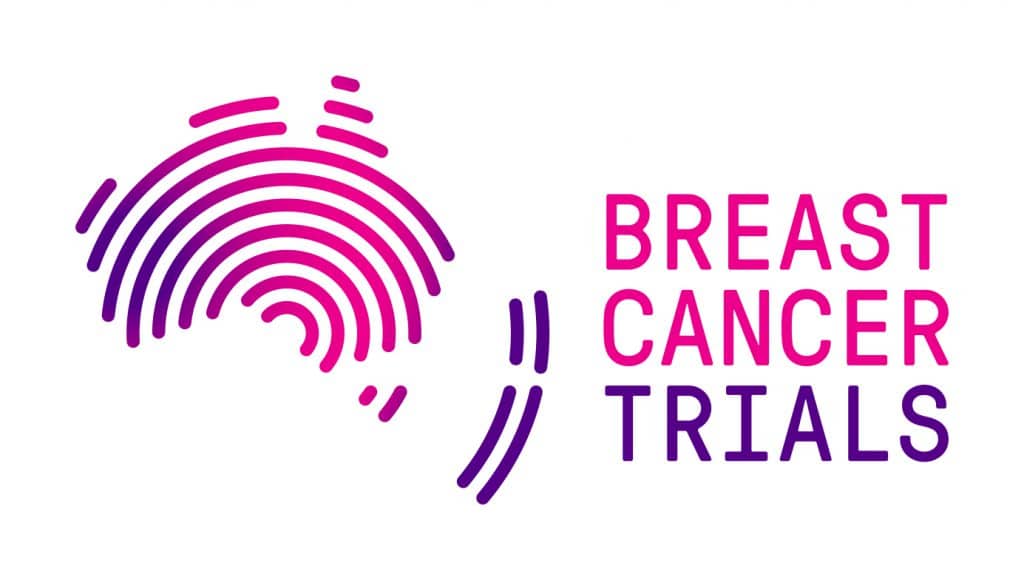- Research
- Open Clinical Trials
- Closed Clinical Trials
- 2022-2026 Research Strategy
- Research Achievements
- Publications
- Research Development and Funding
- BCT Trials & Projects Summary
- Clinical Fellowship Program
- International Fellowship Support
- Translational Research
- What is a Clinical Trial?
- Why Participate in a Clinical Trial?
- Research Blog
- Participating Institutions
- International Collaboration
- Annual Scientific Meeting
- Travel Grants and Awards
- About
- Our Impact
- Fundraise
- Donate
- Researcher Login
- Cart
What is Breast Cancer?
Breast cancer is the most common cancer in women in Australia and New Zealand, and the most commonly diagnosed cancer globally.
Breast cancer occurs when abnormal or damaged cells grow in an uncontrolled manner and a tumour is formed. Most tumours start in the milk ducts which carry milk to the nipple. Both men and women can develop breast cancer although it is less common in men.
Types of Breast Cancer
Breast cancer is not just one disease, but several. It includes different subtypes and treatments are becoming increasingly personalised for patients.
Non-invasive breast cancers (carcinoma in situ) are contained within the milk ducts or lobules in the breast and have not grown into the normal breast tissue:
- Ductal carcinoma in situ (DCIS) – a non-invasive breast cancer that is confined to the milk ducts of the breast.
- Lobular carcinoma in situ (LCIS) – a non-invasive breast cancer that is confined to the lobules or milk producing glands at the end of the milk ducts of the breast.
Invasive breast cancers are cancers that are growing in the normal breast tissue and have the potential to spread to other sites in the body:
- Early breast cancer – an invasive breast cancer that is contained in the breast and may or may not have spread to lymph nodes in the breast or armpit.
- Paget’s disease of the nipple – a rare form of breast cancer that affects the nipple and the area around the nipple (the areola). Commonly associated with an invasive cancer elsewhere in the breast.
- Inflammatory breast cancer – a rare form of invasive breast cancer that affects the lymphatic vessels in the skin of the breast. This type of breast cancer does not present as a lump but rather a redness or rash in appearance.
- Locally advanced breast cancer – an invasive breast cancer that is large or has spread to areas near the breast, such as the chest wall.
- HER2-positive breast cancer – any type of breast cancer that tests positive for a protein called human epidermal growth factor receptor 2 (HER2).
- Triple negative breast cancer – breast cancer that tests negative for all three receptors – oestrogen, progesterone and HER2.
- Metastatic breast cancer – also known as advanced, secondary or stage 4 breast cancer, which has spread to other parts of the body such as the bones, liver or lungs.
How Common is Breast Cancer?
On average, 55 people in Australia and nine people in New Zealand are diagnosed with breast cancer every day. The risk of being diagnosed with breast cancer in Australia by the age of 85 is one in seven for women and one in 726 for men. For New Zealand women, the risk of being diagnosed with breast cancer is 1 in 9.
In 2021, it is estimated that 20,030 new cases of breast cancer will be diagnosed in Australia (164 males and 19,866 females). In New Zealand, approximately 3,500 people will be diagnosed with breast cancer.
A woman’s risk of developing breast cancer increases with age, with the average age of first diagnosis in women being 61 years. 79% of new cases of breast cancer develop in women over the age of 50.
Given the ageing population, the number of women diagnosed with breast cancer is expected to increase each year. However the number of deaths from breast cancer is decreasing.
Only approximately 5–10% of breast cancers are associated with a strong family history or a known genetic mutation.


